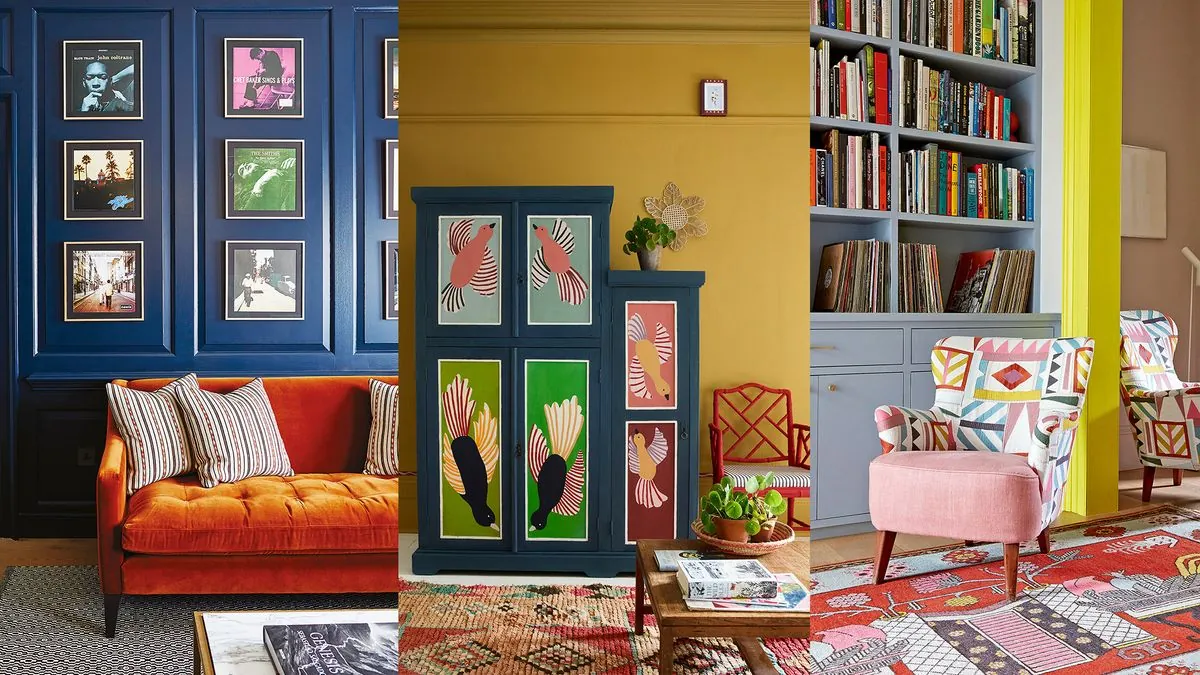Breaking Free from Neutral: How to Infuse Color into Your Home
Discover subtle ways to introduce vibrant hues into your living spaces without overwhelming them. Learn from expert designers on balancing color and creating a lively, harmonious home environment.

In recent years, the world of interior design has been dominated by neutral tones, with Gwyneth Paltrow's beige-on-white California mansion and the ubiquitous cream-colored bouclé chairs serving as prime examples. However, studies indicate that incorporating color into residential spaces can enhance mood and improve functionality. Let's explore how to introduce vibrancy to your home without turning it into a carnival.
Soft hues can breathe life into a room more effectively than stark white. Annie Elliott, a Washington D.C.-based interior designer, suggests opting for less intense shades, such as those found at the bottom of paint cards. To test colors, use painted poster board or sample stickers on walls, observing them at different times to assess the impact of lighting.

Drawing inspiration from prints or artwork is an excellent strategy for developing a cohesive color scheme. Nick Olsen, a New York City interior designer, recommends starting with a multicolored item like a vibrant fabric or carpet to establish a palette. This approach provides a foundation from which to select complementary hues for various elements in the room.
Unexpected areas offer opportunities for bold color choices. Consider painting ceilings, interior doors, or closets in contrasting shades. Charles M. Boggs, a professor of interior design at the Savannah College of Art and Design, likens color to spice, bringing flavor and vitality to a home.
Wallpaper can introduce subtle color and texture. Elliott advocates for grass cloth, a woven wallpaper that adds depth without overwhelming the space. Alternatively, applying wallpaper to a single wall or the back panels of shelving units can create visual interest.
Incorporating natural elements is another way to introduce color harmoniously. Nicole Lanteri, an Arlington, Va.-based designer, suggests using green houseplants or vases filled with pastel dried flowers to bring the outdoors in.
"When people say they don't like color, I think what they mean is screaming color: red, traffic-light yellow."
To create a cohesive look, it's important to balance color throughout the home. Instead of relying on a single "pop" of color, consider weaving similar hues across different rooms. This approach creates a sense of continuity and prevents the space from feeling disjointed.
Painting furniture offers another avenue for introducing color. Elliott recommends painted pieces in rooms dominated by dark wood, suggesting professional services for a glossy finish or DIY approaches for matte or brushed effects.
As we embrace color in our homes, it's worth noting that interior design trends have evolved significantly over time. The use of color in residential spaces has a rich history, with ancient Egyptians employing hues for both aesthetic and symbolic purposes. In more recent times, the concept of "color forecasting" emerged in the 1960s, influencing design choices across decades.
By thoughtfully incorporating color, we can create living spaces that are not only visually appealing but also psychologically beneficial. As we move away from the neutral-dominated designs of the early 2020s, let's embrace the power of color to transform our homes into vibrant, harmonious environments.


































